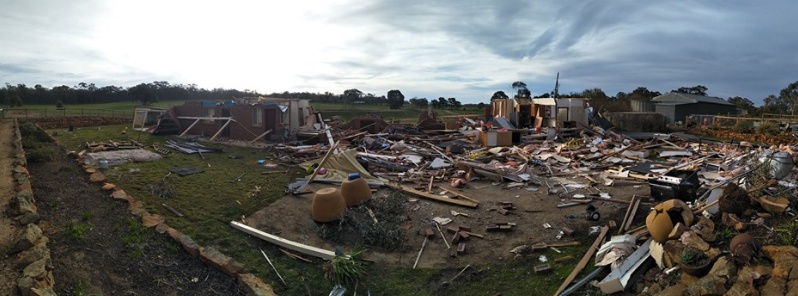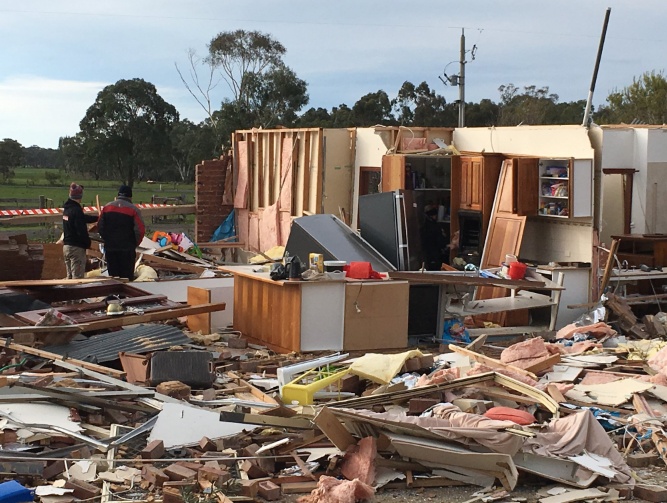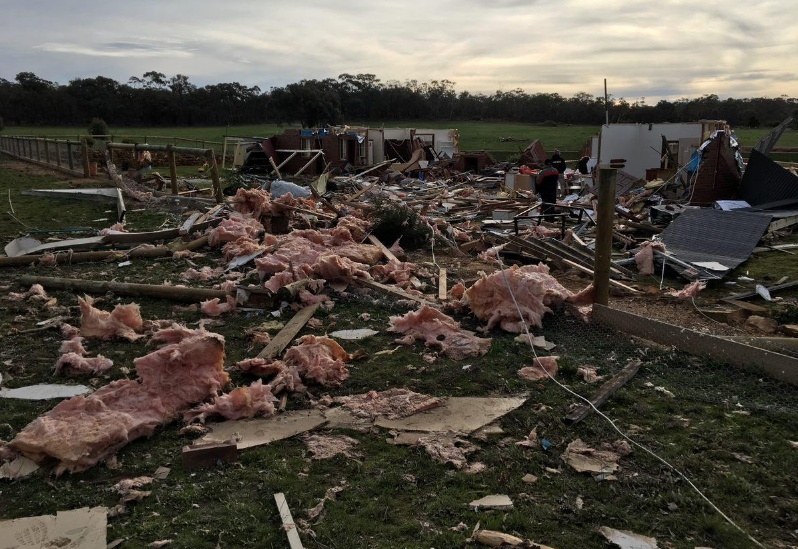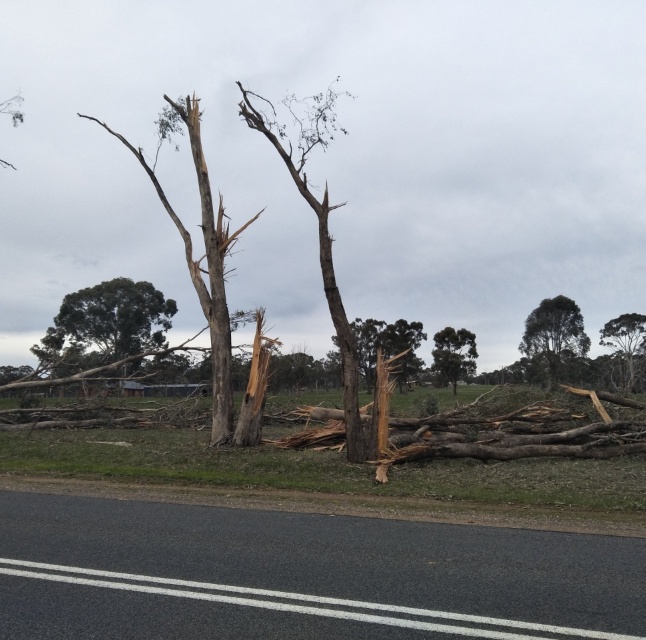Rare EF-2 tornado hits Bendigo, Victoria, Australia

The Australian Bureau of Meteorology has confirmed that a tornado near Bendigo, Victoria, on June 29, 2019 was at least EF-2 intensity with wind gusts in excess of 200 km/h (124 mph).
The tornado flattened one house, snapped big trees in half and sent debris flying in multiple directions but did not cause any injuries.
Tornadoes as strong as this one are unusual this time of year, BOM said.

Image credit: BOM

Image credit: BOM

Image credit: BOM
Events such as this are known as cold season tornadoes or 'coldies.' They are caused by cold fronts sweeping up from the Southern Ocean.
Unlike the tornadoes of the United States which can exist for hours, travel hundreds of kilometers and occur mostly during the warmer months, coldies form and collapse in the space of about 10 – 30 minutes, BOM explained.
They consist of rotating columns of air that move across the ground at 50 – 80 km/h (31 – 50 mph), with typical damage paths being anything from less than a kilometer to several kilometers long and very narrow. Often they are only 20 – 50 m (65 – 164 feet) wide, but sometimes can be 100 – 150 m (328 – 492 feet) wide.
Australia sees around 30 – 50 tornadoes per year, but most of them are in areas with very low population.
The country has had some very strong 'F4' (Fujita scale 4) tornadoes, for example in Queensland in the 1970s–80s and in Bucca, Queensland, in the early 1990s, and an F3 tornado in Mulwala, Victoria, in March 2013.
The ingredients for a cool season tornado to form can be found within the broad air movements associated with a cold front, but things need to be just right for one to form.
The three key factors are:
- low-level wind shear (the change of wind speed and/or wind direction between the ground and around 1 km above the earth's surface);
- capacity of the atmosphere to support deep vertical development of cloud; and
- a lifting mechanism, usually a cold front, to initiate cloud development.
If all of these conditions exist at the same time in the same place, then there is a chance that a cool-season tornado will form.
Featured image credit: BOM

Commenting rules and guidelines
We value the thoughts and opinions of our readers and welcome healthy discussions on our website. In order to maintain a respectful and positive community, we ask that all commenters follow these rules.